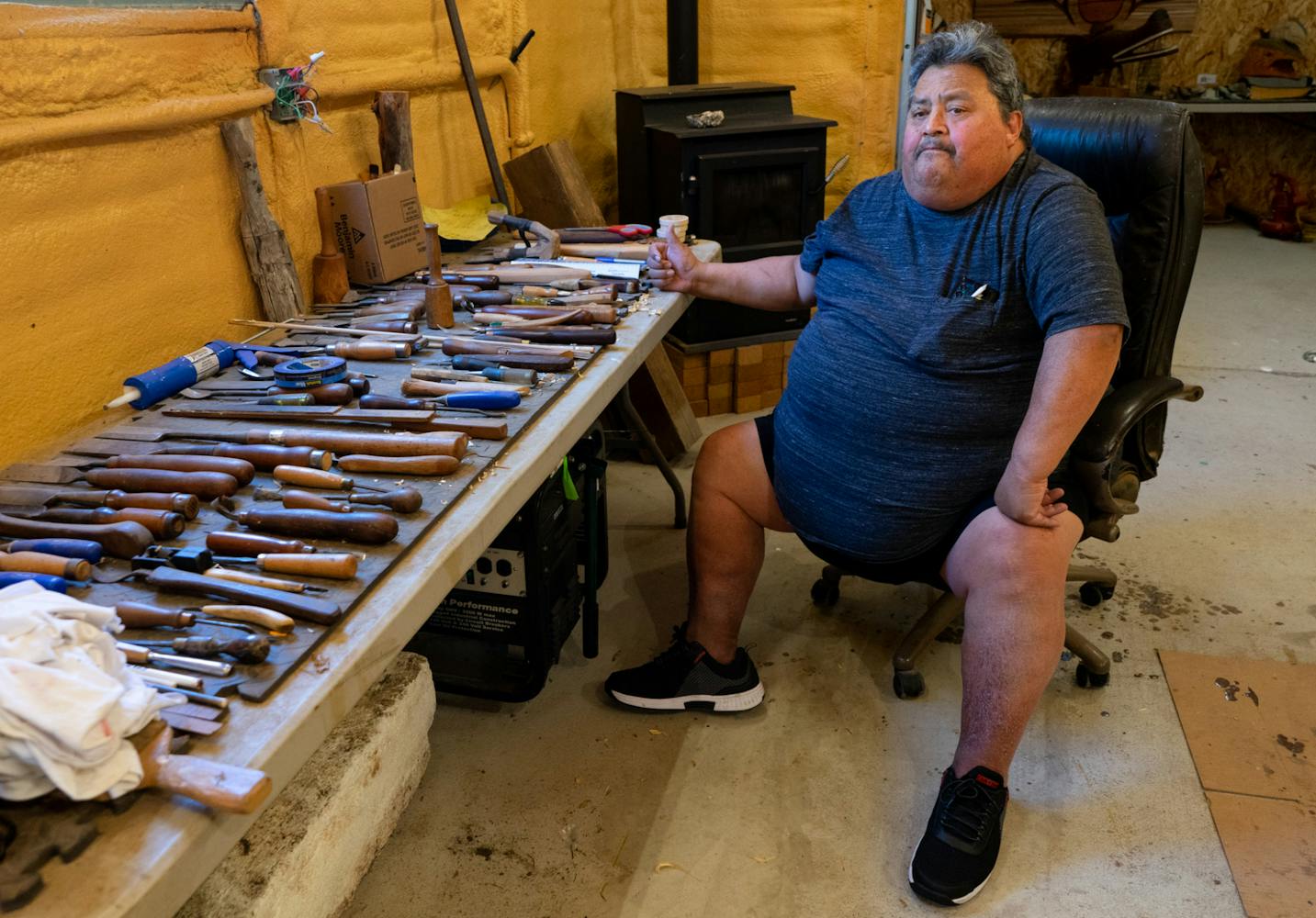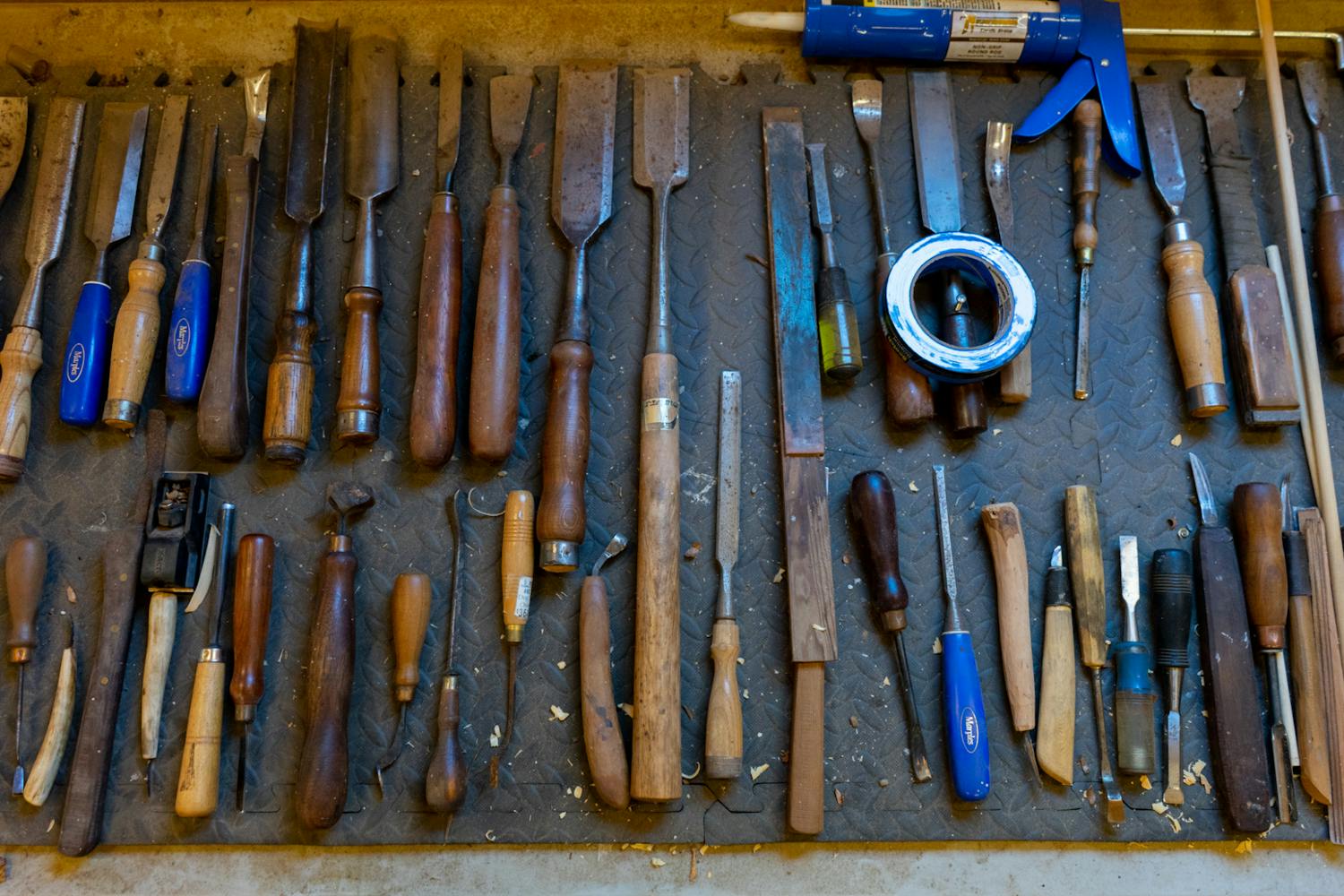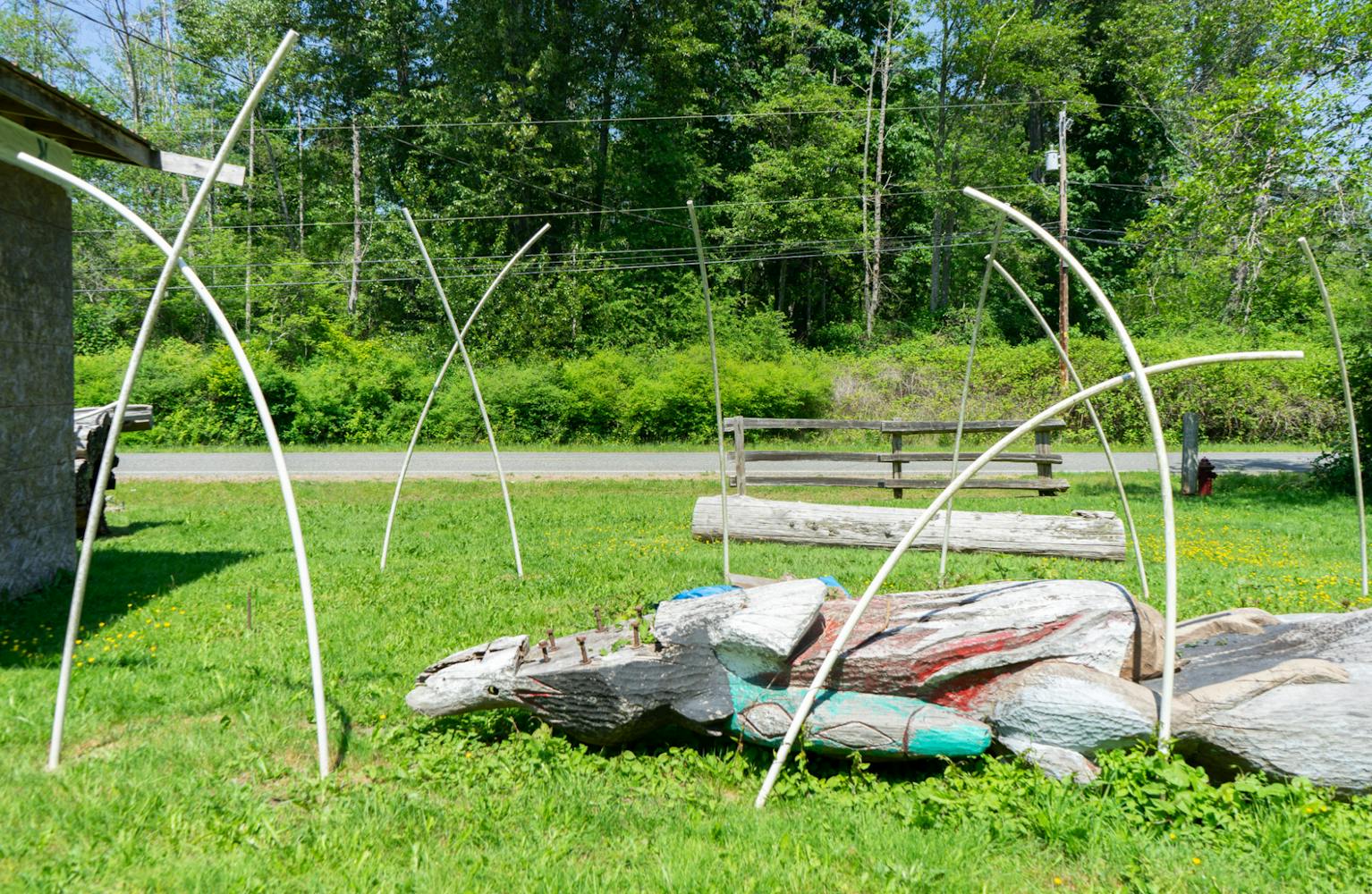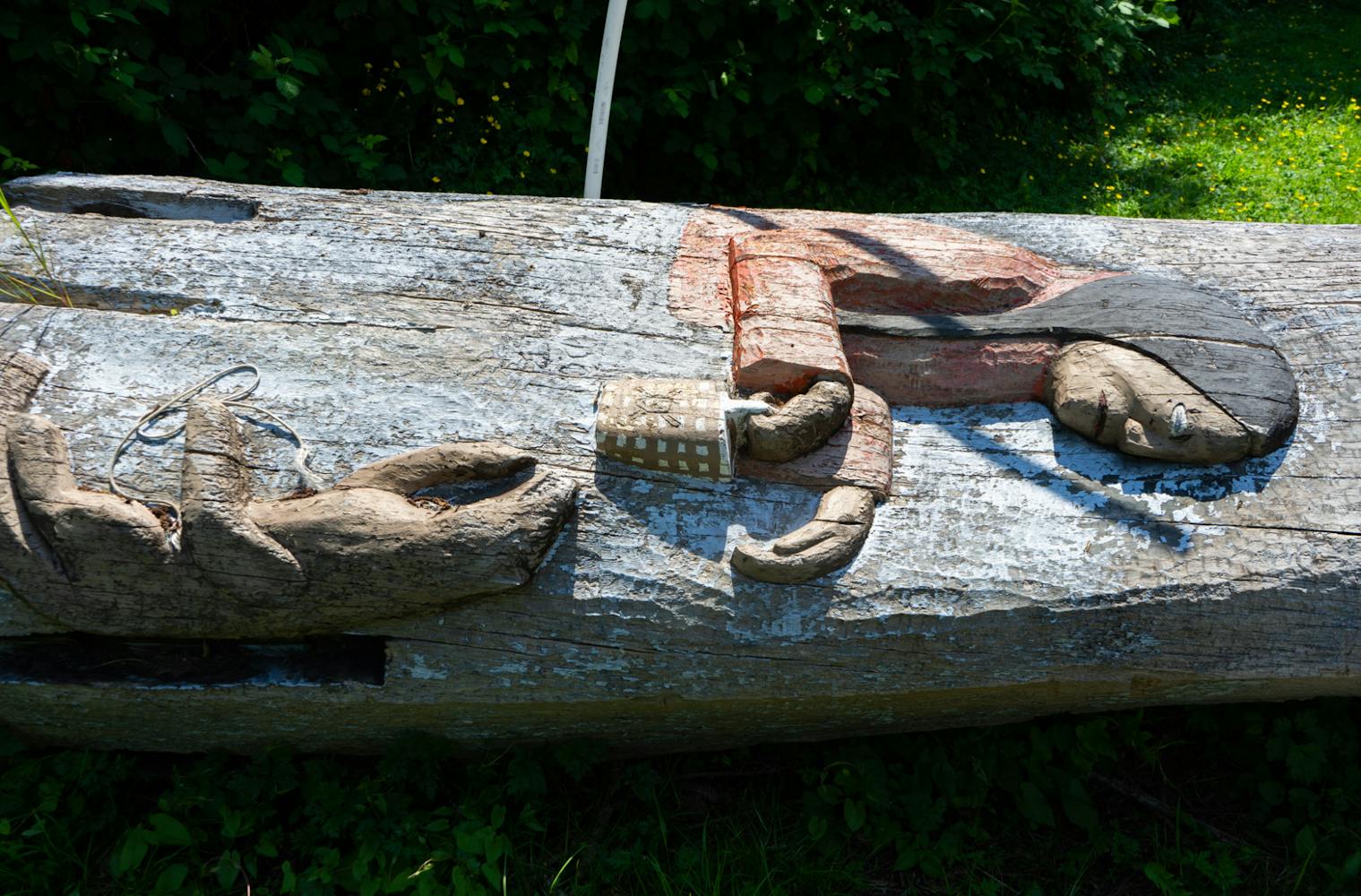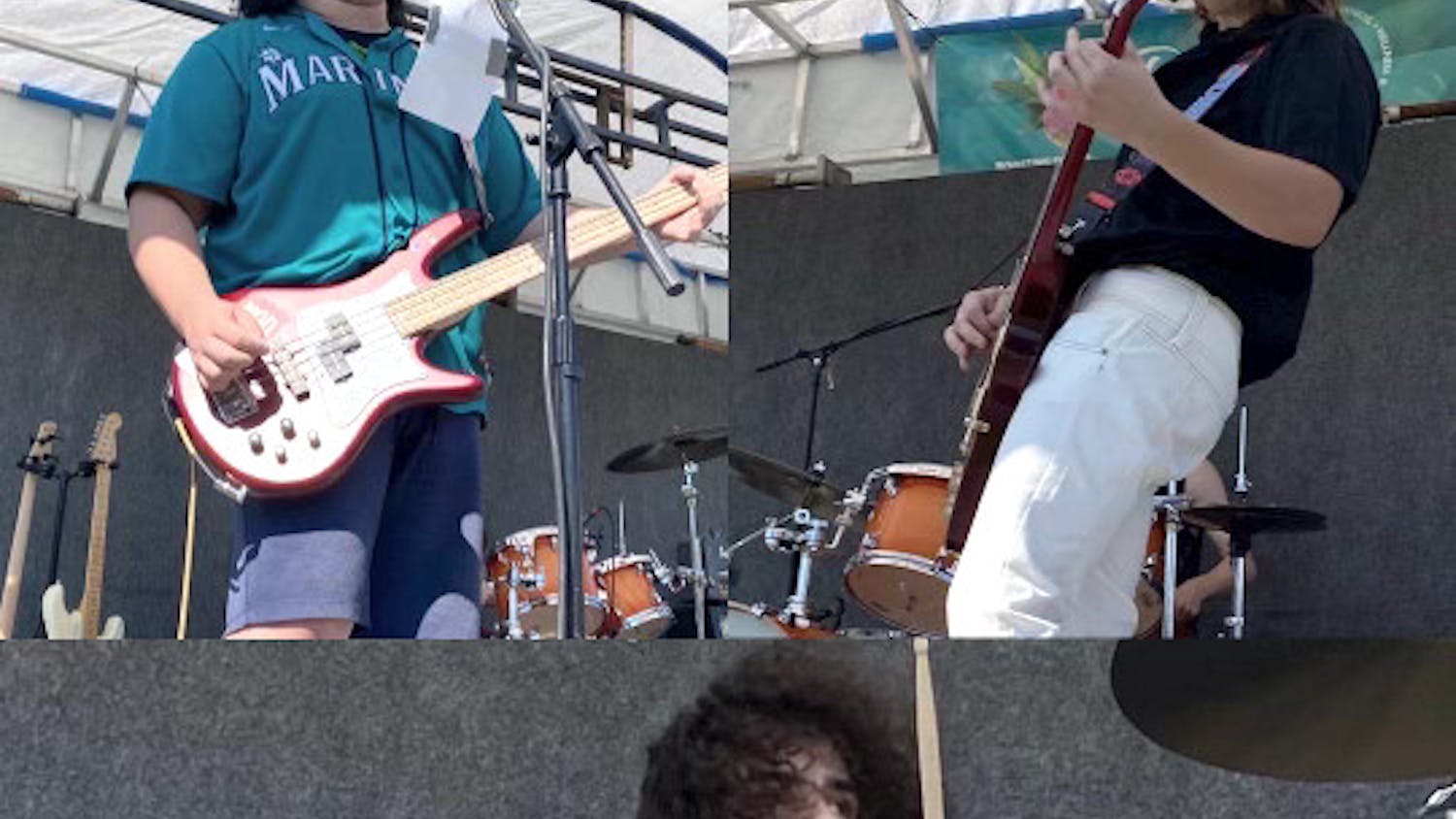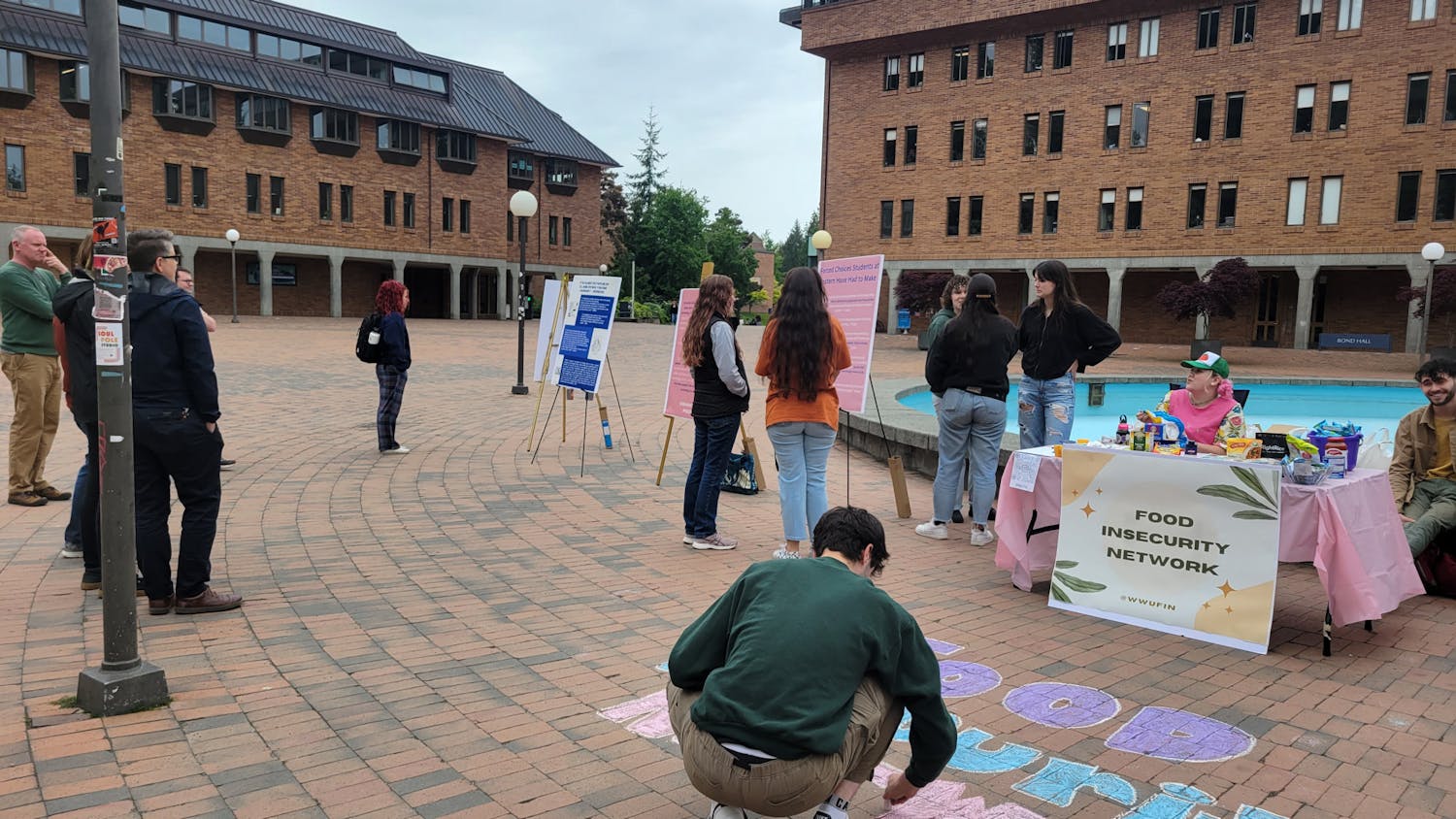The Bellingham Centennial History Pole — reinstalled in front of the Whatcom County Courthouse as of April 17 — tells the story of Lummi Nation leaders welcoming early European settlers. Lummi story poles invite viewers to follow their carvings up one side and down the other, communicating an event or legend.
At the base of the pole, Chief Chow’it’sut and his brother Tsi’li’xw guide Henry Roeder and Russell Peabody in a canoe toward the proposed site for their sawmill on March 5, 1852.
Among other representations on the pole, the serpent monster SanyItkay tightly clutches cattails– symbolic of the Lummi people and their ability to band together against adversity.
Master Carver Joseph Hillaire, Kwul-kwul’tw, was commissioned to create the pole in 1952. His daughter, Pauline Hillaire, also known as Scälla (“Of the Killer Whale”), entrusted Master Carver Felix Solomon with the first restoration of the pole in 2007 after it experienced depreciation.
“It was an honor for her to ask me to do this type of work,” Solomon said.
After the pole was vandalized in early 2021, Whatcom County Public Works Department sought Solomon out again.
Solomon got to work with close friend and fellow carver Ralph Bennett. They removed paint and wood rot, then glued on replacement wood and repainted it.
“They were very thorough [and] able to finish it in the same character that it was originally built,” said Daniel Goger, special projects manager for Whatcom County Public Works.
In a brief ceremony during the installation in April, Bennett explained the significance of the pole to Whatcom County workers, while holding a branch of cedar wood.
Story poles are carved out of old-growth red cedar wood. The art form is highly technical, requiring years of training from master carvers or elders.
“To start, you have to have the drive to do it,” Solomon said with much emphasis.
While it is unclear when the tradition started, it became a well-established practice in the 20th century thanks to carvers like Joseph Hillaire.
When carvers depict salmon, raven, wolf dancers or other representations on poles, it signifies that ancestors of their family had encounters or formed relationships with those beings, according to Pauline Hillaire in her book “A Totem Pole History: The Work of Lummi Carver Joseph Hillaire.”
“[Story poles are] about identity,” Solomon said.
This includes the Bellingham Centennial History Pole.
“It’s good to have it looking the way it should be,” Solomon said. “It's majestic. [I] try to do the ancestors right and to carry [this tradition] on.”
Eli Voorhies (he/him) is the opinions editor this quarter. Previously, he was a city life reporter and editor. In his free time, he climbs, photographs and spends more time messing around than working at Legendary Vinyl Records. You can reach him at eliv.thefront@gmail.com.




